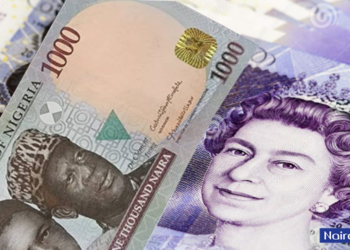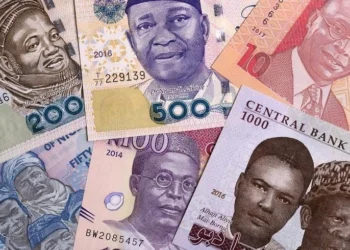Commercial banks in Nigeria suffered CRR debits of N8.3 trillion in the financial year ended December 2020. This represents a 59% increase from the N5.2 trillion debited in 2019.
Nairametrics confirmed this data from the financial statements of all commercial banks listed on the Nigerian Stock Exchange and excludes banks not listed, suggesting the amount could be closer to N9 trillion. Nigeria’s largest banks “FUGAZ” suffered the most debits with about N5.9 trillion in debits in 2020, over 70% of the total debits. Except for Unity Bank, all the banks have released their full-year earnings for 2020.
READ: Analysis: GTB is minting profits but CBN is squeezing its cash

Source: Nairalytics Research.
Private-sector lending rises
The CRR is an abbreviation for Cash Reserve Ratio and is a monetary policy tool used by the Central Bank of Nigeria to control money supply in the economy. The central bank increased the CRR from 22.5% to 27.5% in January 2020 a decision it explained was because they wanted banks to lend more to the private sector.
- The CRR empowers the central bank to sequester up 27.5% of customer deposits held by commercial banks, effectively restricting the banks from accessing the money. The restrictions impact significantly on the ability of some banks to generate interest income reducing the margins that banks can make in a given period.
- The CRR debits are derived via a complex calculation involving a balance between a minimum loan to deposit ratio banks are expected to achieve and what they have in their balance sheet as cash deposits.
- Banks that fall below the CBN’s loan to deposit ratio requirement of 65% have the full weight of the CRR imposed on them.
READ: CBN says bank credit grew by N290 billion in 6 weeks as lending rates drop
Banks have secretly complained bitterly about the level of CRR debits highlighting the effects it has on their bottom line especially Net Interest Margins. The year 2020 was also characterized by lower interest rate environment as banks earned much lower from Treasury Bills and other risk-free government securities.
What they are saying
Despite the claims, Net Interest margins for the commercial banks under review blew past N2 trillion for the first time in 2021 as lower cost of funds helped cushion the effects of lower interest rate environment and limited access to OMO securities. For example, GT Bank remarked in its investor presentation that it was able to mitigate the impact of CRR from sources such as revaluation of its foreign assets.
“CRR increase of 127.4% (₦565.1bn), funded through improved Naira liquidity largely from OMO maturities impaired the Group’s ability to take maximum advantage of opportunities to optimize its earnings potential. The Bank was however able to cushion the impact of CRR on earnings through optimization of its US$ liquidity and Revaluation Gains. The Bank benefitted from the US$1.15bn long position owing to devaluation of Naira against US$.” GTB
Zenith Bank also confirmed the impact of lower yield environment on their net interest margin in 2020 when they released their 2020 full year results.
“This retail drive, coupled with the low-interest yield environment helped reduce our cost of funding from 3.0% to 2.1% and also reduced our interest expense. However, the low-interest environment also affected net interest margin, which declined from 8.2% to 7.9% in the current year due to the re-pricing of interest-bearing assets.” Zenith Bank
One of the reasons cited by the CBN for introducing this policy in 2019 was to reduce the amount of customer deposits commercial banks were channeling into treasury bills as against lending to the private sector. Since its introduction, lending to the private sector has increased to N30.6 trillion from N26 trillion, data from the CBN’s monetary credit stats reveal.
Another reason cited by experts as an impetus for the CRR is the CBN’s capital control strategy where it limits the amount of naira available for banks to engage in illegal forex roundtripping by arbitraging from the disparity between the parallel market rates and the official rates.
READ: CBN says bank credit grew by N290 billion in 6 weeks as lending rates drop
What CBN does with the money?
Despite the CBN’s official claims that the CRR is required to help stimulate lending to the private sector, critics believe there is more to it.
In conversation with Nairametrics, Critics of the central bank’s CRR Policy who prefer to remain anonymous suggest some of the CRR debited from the banks are used to fund the Federal Government’s revenue shortfalls via the controversial Ways and Means provision of the apex bank. According to the CBN over N10 trillion has been extended to the Federal Government via Ways and Means since 2019, the highest on record.
To repay the money, the CBN in collaboration with the Ministry of Finance announced the introduction of “Special Bills” a fixed income security that offers commercial banks a window to earn an income on their balances held by the CBN. Some of the features of the Special Bills include the following;
- It has a Tenor of 90 days
- It comes with Zero coupon, as the applicable yield at issuance will be determined by the CBN.
- The instrument will be tradable amongst banks, retail and institutional investors.
- The instrument shall not be accepted for repurchase agreement transactions with the CBN and shall not be discountable at the CBN window.
- The instrument will qualify as liquid assets in the computation of liquidity ratio for deposit money banks.
Data from the FMDQ OTC reveals Special Bills maturing in 52 days are currently trading at a yield of 5.43% as of Friday.























Long Beach